
- Appointments
- Awards
- Books & Authors
- Committees
- Deaths
- Defence
- Economic
- Environment
- Finance
- Important Days
- International
- Miscellaneous
- National
- Persons in NEWS
- Places in NEWS
- Regional
- Reports
- Resignations & Retirements
- Science & Technology
- Sports
- May 2017 - Exams Resources
- Current Affairs - Quiz
- Current Affairs - Test
- Current Affairs - PDF
Current Affairs May 2017 - Technology
News 1 - IIT Roorkee Scientists Create Low Cost Solar Cells using Jamun

IIT Roorkee scientists have used Jamun to create inexpensive and more efficient solar cells. Jamun is a juicy Indian summer fruit.
The team of scientists used naturally occurring pigment found in jamun as an inexpensive photo-sensitizer for Dye Sensitised Solar Cells (DSSCs) or Gratzel cells. Natural pigments are too economical as compared to regular Ruthenium-based pigments.
The research was published in the Journal of Photovoltaics.
News 2 - GSLV successfully launched South Asia Satellite
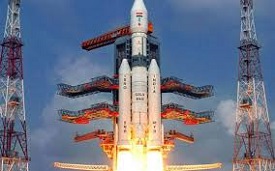
India's Geosynchronous Satellite Launch Vehicle (GSLV-F09) successfully launched the 2230 kg South Asia Satellite (GSAT-9) into its planned Geosynchronous Transfer Orbit (GTO).
It took place from the Second Launch Pad at the Satish Dhawan Space Centre, Sriharikota. This is the fourth consecutive success achieved by GSLV carrying indigenously developed Cryogenic Upper Stage.
The South Asia Satellite will be commissioned into service after the completion of orbit raising operations and the satellites positioning in its designated slot in the GSO following in-orbit testing of its payloads.
News 3 - The first Inflatable Nasas Greenhouse could enable water recycling on Mars
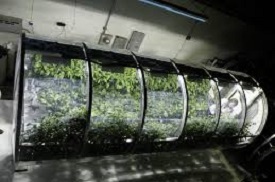
NASA scientists at the Kennedy Space Centre in Florida are collaborating with a university team to develop long-term methods that could help sustain pioneers working in deep space. The Prototype Lunar/Mars Greenhouse project will support ongoing research in space to grow vegetables for food and cultivating plants to sustain life support systems.
The prototype involves an inflatable, deployable greenhouse to support plant and crop production for nutrition, air revitalization, water recycling and waste recycling. The process is called a bio regenerative life support system.
News 4 - NASA to Measure Greenhouse Gases over the Mid-Atlantic Region
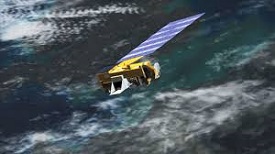
In May, a team of Goddard scientists will begin measuring greenhouse gases over the Mid Atlantic region an area chosen in part because it encompasses a range of vegetation, climate, and soil types that would influence the exchange of carbon dioxide and methane between the Earth and the atmosphere.
The airborne campaign, called the Carbon Airborne Flux Experiment, or CARAFE, could help scientists better understand the exchange process, also known as flux, and improve computer models that predict Earths carbon sinks, natural or artificial areas that absorb carbon dioxide or methane.
News 5 - NASA named new species after Late APJ Abdul Kalam

Scientists at NASA have named a new organism discovered by them after the late president Dr A P J Abdul Kalam. Researchers at the Jet Propulsion Laboratory, JPL, the foremost lab of NASA for work on inter-planetary travel, discovered the new bacteria on the filters of the International Space Station, ISS, and named it Solibacillus kalamii to honour the late president.
The new species is a spore forming bacteria. The filter on which the new bug was found remained on board the International Space Station for 40 months.
News 6 - NASA detected Signs of Water in a distant Neptune Sized Planet
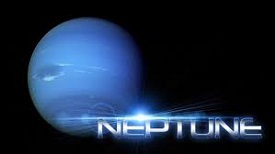
Scientists at NASA have detected a strong water signature in the atmosphere of a distant Neptune-sized planet, HAT- P-26b. It has a primitive atmosphere composed almost entirely of hydrogen and helium and orbits a star roughly twice as old as our Sun.
The study is based on observations from NASAs Hubble and Spitzer space telescopes. Scientists have detected the presence of water by pooling data obtained from four transits when the planet passed in front of its host star.
News 7 - NASA found signs of presence of water on a distant Neptune sized planet

A study combining observations from NASAs Hubble and Spitzer space telescopes reveals that the distant planet HAT-P-26b has a primitive atmosphere composed almost entirely of hydrogen and helium. Located about 437 light years away, HAT-P-26b orbits a star roughly twice as old as the sun.
The researchers determined that HAT-P-26bs atmosphere is relatively clear of clouds and has a strong water signature, although the planet is not a water world. Because the study provided a precise measurement of water, the researchers were able to use the water signature to estimate HAT-P-26bs metallicity.
News 8 - World's smallest Satellite KalamSat developed for NASA

The 18-year-old Tamil Nadu boy Rifath Sharook developed worlds smallest satellite for US National Aeronautics and Space Administration and named it 'KalamSat'. It is for the first time that US National Aeronautics and Space Administration will be piloting an experiment by an Indian student.
KalamSat is named after India's former President, APJ Abdul Kalam. This amazingly built KalamSat weighing 64 grams, would be functional for 12 minutes in a micro-gravity environment of space. The main function of the KalamSat will be to perform the performance of 3D-printed carbon fibre.
News 9 - ISRO and NASA to inspect 'oldest civilization' site in Haryana
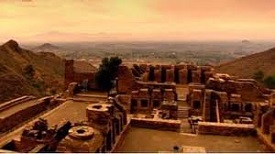
US space agency NASA and the Indian Space Research Organisation (ISRO) will jointly inspect the excavation being carried out at an archaeological site in Haryanas Fatehabad district.
The archaeologists have recovered artefacts, which included ornaments and pots, apart from spherical structures from the site, which is located in village Kunal.
NASA and ISRO are likely to start the inspection from October 2017.The artefacts are estimated to be 6000 year old.
News 10 - SpaceX launched Super-Heavy Communications Satellite

A SpaceX Falcon 9 rocket lifted off from launch pad 39A at NASA's Kennedy Space Centre with a communications satellite that will complete Inmarsat's fifth-generation broadband network, marking its first launch for the London-based mobile broadband company. The Inmarsat-5 F4 satellite was built by Boeing.
The satellite is the fourth in the company's Global Xpress (GX) constellation, aimed at providing high-speed mobile broadband service. SpaceX is headed by Elon Musk.
News 11 - IIT Delhi researchers made cheapest respiratory filter

In order to save people from increased alarmic air pollution, IIT Delhi scientists developed worlds cheapest respiratory filter which filters entry of up to 95% dust and air particles. It is available at the price of Rs 10.
It protects against the finest particulate pollutants in the air for at least eight hours. The researchers received National Startups Award by President Pranab Mukherjee.
The innovators team members were IIT Delhi faculty members Manjeet Jassal and Ashwini K Agrawal, besides institute alumni Sanjeev Jain, Prateek Sharma, Tushar Vyas and a student Jatin Kewlani.
News 12 - Scientists Discover First Human Antibodies to Fight Ebola Viruses
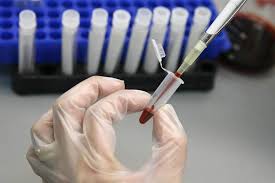
Researchers have discovered the first natural human antibodies that can neutralize and protect animals against all three major disease-causing ebolaviruses.
The team of scientists analyzed the blood of a survivor of the 2013-16 Ebola outbreak.
The researchers also highlighted about the human genes, which are likely the source of the immune cells that produce the two antibodies.
These findings could help speed the development of vaccines to prevent ebolavirus infection.